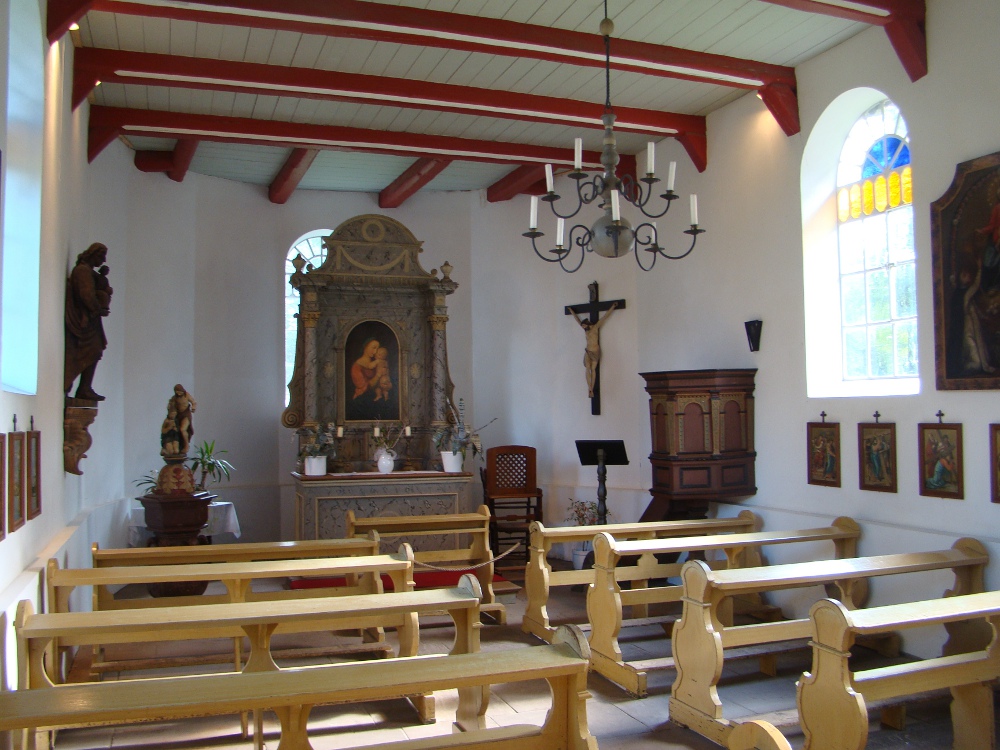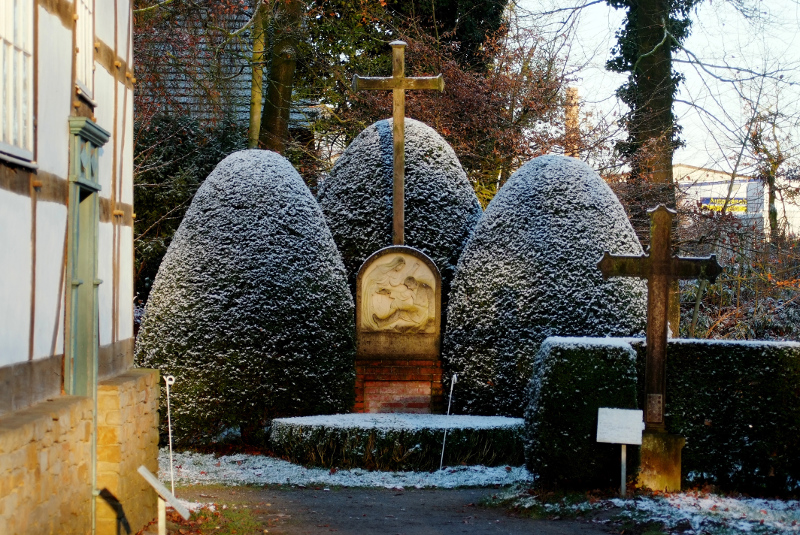Village Church
Village Church from Klein Escherde (Hildesheim County), built in 1699. Re-constructed at the open-air museum in 1977

Dedicated to the Holy Family
The old church from 1699 with its foundation of almost seven by fifteen meters was too small for the Klein Escherde community in the Seventies, and they decided to build a new one. In this manner, the museum was able to add half-timbered building devoted to the Holy Family including its inventory. All of the pews, the tower clock with its heavy iron clockwork, the confessional box, the harmonium and the fourteen stations with their images can therefore be seen today in this reconstructed building. Of course, the building had undergone many changes during its life in Klein Escherde. The iron windows that were installed in the late 19th century are proof of the Industrial Age.

Sacred culture from the region
In addition, there are the numerous sacred art works from the local area in the church. They include the oratory from Wildehausen from the late Middle Ages as well as the statue of Holy Joseph created by Thomas Simon Jöllemann for the high altar in Friesoythe in 1738 or the baptismal font from the church in Damme that was also created in the Jöllemann workshop. Works from the dynasty of Jöllemann sculptors stamped the various church rooms of the 18th century of the Oldenburg Münsterland. Even the rosary picture that radiantly surrounds the Immaculate Mary original hung in the Church of St. Mary in Friesoythe, while depicting the Martyrdom of St. John of Nepomuk, an object that came to our region from Böhmen as part of the expulsion at the end of World War II.
The altar that found its way to the open-air museum is much younger, as the community of Listemohl in Sauerland lost their church as well as their community to the creation of the Biggesee and it’s dam. A Vienna Professor of Painting affected the style of the Pre-Raphaelite images of the Madonna around 1840 for the retable.
